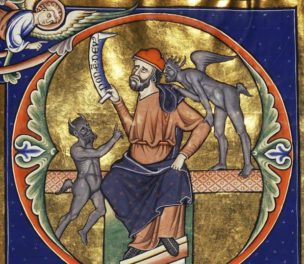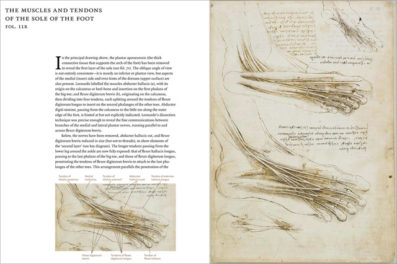Happy Pi Day! March 14 is a special day for nerds everywhere to pig out on pie and celebrate the world’s most endearing mathematical constant, π. The ratio of a circle’s circumference to its diameter, π (the Greek letter pi) rounds to 3.1415—earning this year’s date, 3.14.15, the designation of Ultimate Pi Day.
In honor of the day, we celebrate circularity with six beautiful manuscript pages selected by our curators as leading exemplars of roundness.
Astrological & Astronomical Circles
Volvelles are proto-cyber wheel charts, usually made of paper with moving or rotating pieces. This one is an astronomical table featuring concentric circles that was used as a medieval calculating device.

Astronomical Table with Vovelle, late 1300s, Unknown illuminator. 8 3/8 x 6 in. The J. Paul Getty Museum
This many-circled chart features the earth (labeled Terra) at the center, with the signs of the Zodiac on the outer rim.

Astrological Chart, about 1405, Virgil Master. The J. Paul Getty Museum
Religious Circles
In a religious context, circles represent Earth and sometimes Heaven. This illumination shows the creation of the heavens, a red orb covered in what might be a wind, cloth, or a wave.

The Creation of the World; The Creation of the Heavens, about 1360-70, Master of Jean de Mandeville. The J. Paul Getty Museum
These four miniatures compress the seven days of the creation of the heavens and Earth. Take a closer look.

Detail of Scenes from the Creation, about 1390- 1400, First Master of the Bible historiale of Jean de Berry. The J. Paul Getty Museum
Poetic Circles
Around the dove at the center of this diagram is inscribed “fear and hope, love and desire.” Sometimes fear and love are known as “extremes,” while hope and love are qualities associated with doves. There’s a metaphor in there somewhere.

Diagram with a Dove, after 1277, Unknown. The J. Paul Getty Museum
Here a music lesson takes place as the philosopher Boethius (in red) points out tonal intervals that hover in a gold circle above a grassy field. This alludes to music of the spheres, a philosophical concept that likens the harmonious movements of heavenly bodies to music.

Boethius Discusses Music with a Group of Men, about 1405, Virgil Master. The J. Paul Getty Museum
For more fun zooming and panning on circles, here are a few choice roundels, some lovely rings, and a whole slew of vessels with (oh boy!) diameters.




Comments on this post are now closed.